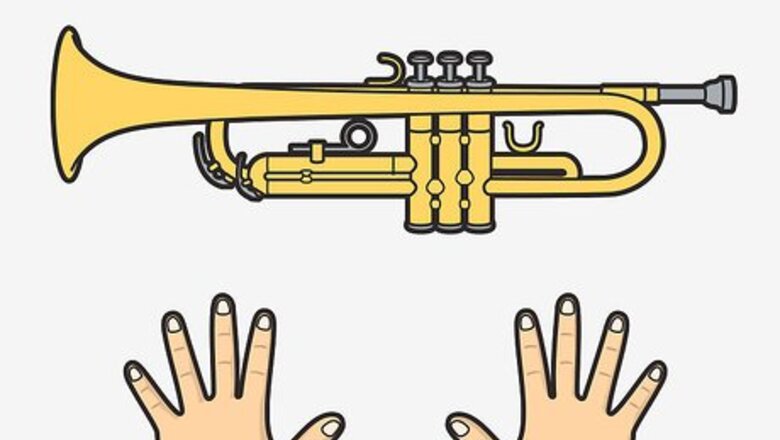
views
Placing Your Left Hand
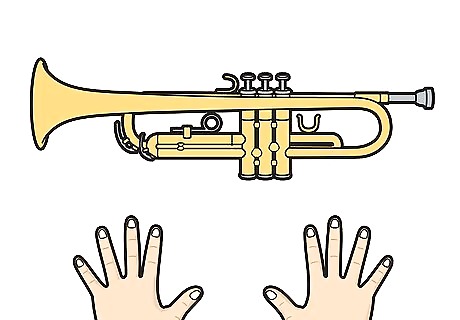
Hold the trumpet the same whether you are left- or right-handed. Although there are some left-handed professional trumpet players who hold their trumpet opposite of the recommended method, most use the standard grip. Many musical instruments require the use of both hands, and left-handed musicians have been shown to be adept at dexterity in their right hand as well. If you have a disability limiting the use of one of your hands, find a modified hold which works for you.
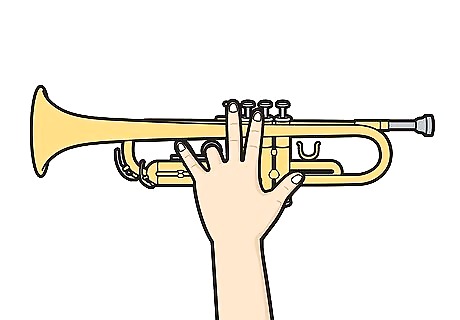
Place your left ring finger through the ring on the trumpet. You can find the ring next to the valve casing, which looks like 3 attached vertical tubes.This ring operates the third slide valve, which is used to help adjust out-of-tune notes. If you have very large hands, you may rest your little finger under the third valve slide. If your hands are very small, you may want to rest your little finger inside the ring and wrap your other 3 fingers around the valve casing.

Wrap your left index and middle fingers around the valve casing. These fingers on your left hand, along with your ring finger, are used to support most of the weight of the trumpet. They should rest against the valve casing next to the ring.
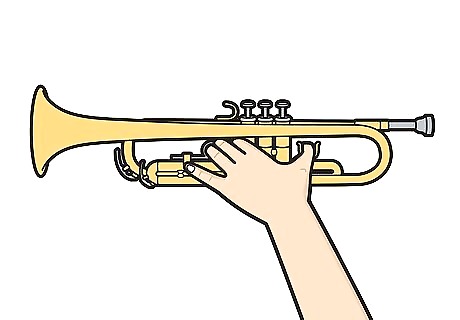
Place your left thumb on the slide next to the first valve. This is another valve slide, and it is used to tune sharp notes which are played using the first valve. You will usually only move the first valve slightly, if at all. Your band instructor can help you learn which notes need to be tuned.

Avoid resting your left palm against the valve casing. This will affect your ability to operate the slide valves. You should try to make as little contact with the trumpet as possible, as this can affect the instrument’s acoustics.

Grip the trumpet firmly with your left hand. Most of the support of the trumpet comes from your left hand, so make sure you keep a firm grip. Otherwise, your right hand will have to compensate, which will affect your hand position and therefore your playing ability.
Placing Your Right Hand
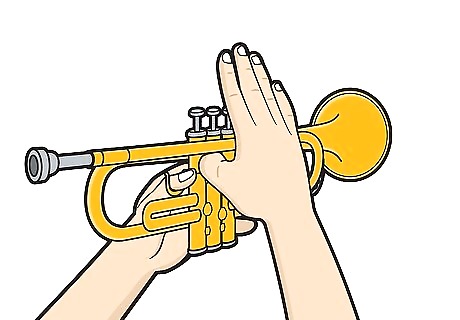
Rest your right thumb between the first and second valve casings. (You can also place your thumb behind the first valve and this will give you the maximum function of your fingers to press the key down.) This thumb will support some of the weight of the trumpet. It should be placed beneath the lead pipe, or the pipe which attaches to the mouthpiece. Do not bend your thumb, as this can restrict the movement of your other fingers. Some instructors will recommend that you keep your thumb rested against the first valve casing rather than between the first and the second. This technique is designed to help you keep your thumb straight and should not affect the way the trumpet is supported.

Strike the valve keys with your right index, middle, and ring fingers. Pressing different combinations of valve keys is how you play different notes. Using the balls of your fingers, press down the keys that correspond to the notes you wish to play. Rest your fingers on the keys when you're not playing.

Round the fingers of your right hand as you play. Think of keeping them in the shape of a claw. Curving your fingers will give you the flexibility to play notes quickly. Even if you’re just beginning, practicing this technique from the start will help you as you advance to more complex musical pieces. Your band director will instruct you on the different fingerings used to play notes, or you can use a music book or search for a fingering chart online.
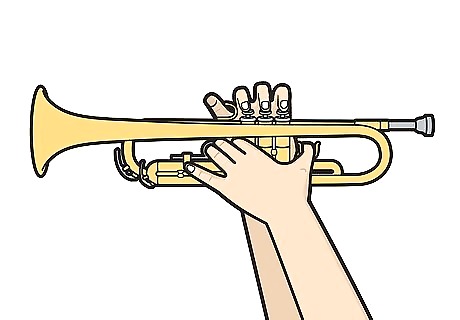
Avoid resting your right little finger in the finger hook. It may seem convenient to place your little finger in the finger hook, allowing it to hold some of the weight of the trumpet. However, this will affect your ability to move your fingers freely, especially your ring finger on the third valve. It’s fine to use the finger hook temporarily if you need to use your left hand to turn a page of music or reach for a mute. Just try not to get in the habit of doing it all the time.
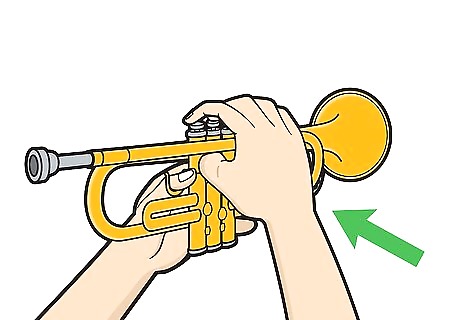
Relax your right wrist. Make sure that you are keeping your right wrist relaxed. Stiffness in your wrist will affect your ability to press down the valves, and it may lead to wrist pain after long periods of holding the trumpet.
Using Correct Technique

Sit or stand up straight. Many people find that it is easier to play the trumpet while standing, but this is not always practical, especially when playing as part of an ensemble. Whether sitting or standing, be sure to keep your back straight. Slouching will affect your air flow, making it harder for you to play sustained notes and maintain a steady volume.

Relax your shoulders. Even when you’re sitting or standing with your back straight, try to relax your shoulders. This will help you to take deeper breaths. It will also help prevent neck pain and tension if you’re practicing or performing for long periods of time.
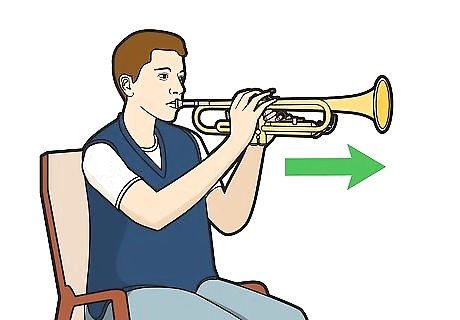
Point the trumpet straight ahead. You don’t want the bell of the trumpet pointing at the floor, because then the sound won’t travel as well. A downward slope of the trumpet will also restrict some of your airflow, which can affect the pitch and volume of your playing.
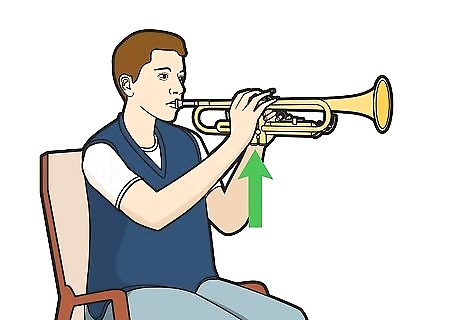
Keep the trumpet straight up and down. The valve casing of your trumpet should always be vertical. Rotating the trumpet can put strain on your wrists and will prevent you from playing notes quickly and accurately.
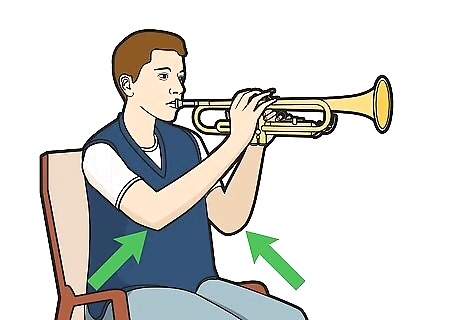
Keep your elbows out from your body. Don’t tuck your elbows into your body, as this creates strain on your neck and shoulders and can restrict your airways. Instead, hold them slightly out from your sides at an angle that feels relaxed and natural. If you're holding the trumpet correctly, your forearms should come together at a right angle in front of your body.


















Comments
0 comment